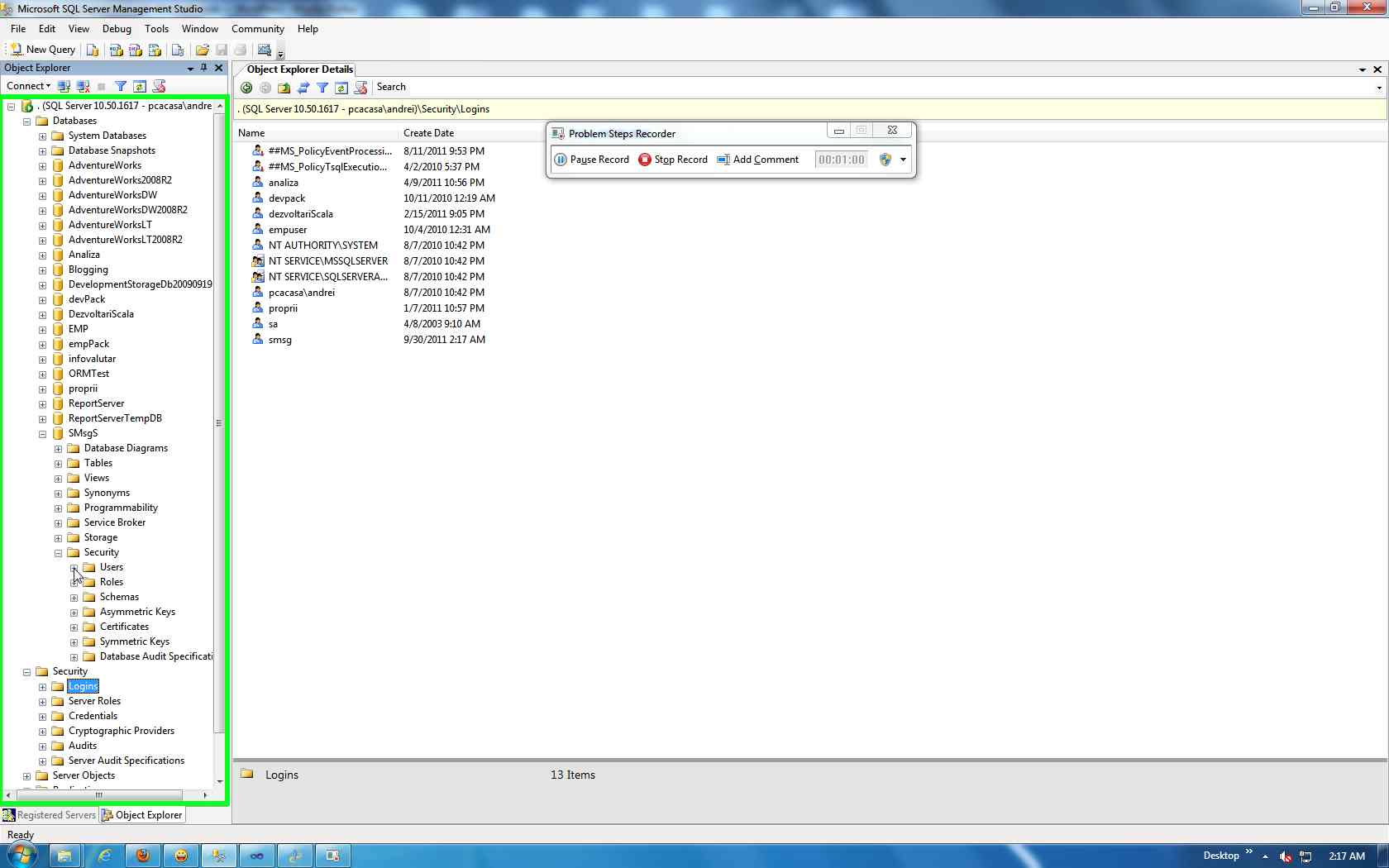
This dialog allows selection of either users or other database. On the General tab, under 'Members of this role:', click 'Add.'. Through the GUI, view the properties of the Database Role 'dbdatareader'. You could add your (user defined) database role to dbdatareader as a role member, using the UI. In both cases, it is still possible to overrun the memory limits, but both of these forms are substantially less memory intensive than the default method of multiple INSERT statements.įriday, Janu8:09:05 AM - Junior Galvão - MVPĪnother way: put `go` command every 1000 line. But you can grant to roles that you create. INSERT INTO TestTable(ID, Value) SELECT 1,1 UNION Select 2,2 UNION. You can also use UNION statements to reduce your overhead: StackOverflow (SO) has better and mroe comprehensive suggestions regarding this issue:įor the specific case given, using the enhanced SQL Server 2012+ VALUES statement will help significantly: sql script, surely all of those 1 row(s) affected in the sqlcmd output window are not very useful. Nice, but I would recommend SET NOCOUNT ON in your. Here is my question, How to choose the required DB name to execute my script through SQLCMD ? Saturday, Janu3:51:27 PM - Sergey GigoyanĪgree with Jim, putting 'go' command after every 1000-th line does not solve the problem, the same error appears (tested on SQL Server 2014 SP2, file size - 112 MB). You can do that by using "-d" command-line option:

Saturday, Janu3:58:53 PM - Sergey Gigoyan Here, we will GRANT permissions to our new user 'Steve'.

Caution A table-level DENY does not take precedence over a column-level GRANT.

Right-click the User to which you want to GRANT or REVOKE the permissions. If a user needs permissions to objects in another database, create the user account in the other database, or grant the user account access to the other database, as well as the current database. In Object Explorer on the left pane, expand the Databases folder and select the concerned database and navigate to the by expanding Security and Users folders. Why its not asking User Name and password? is it a loophole ?īrendt, that syntax was introduced in SQL Server 2008, not SQL Server 2012. Let's grant permissions to a user using SQL Server Management Studio.
#Sql studio gran dbreader to user windows 10
It's a decent free product but some bugs are annoying!Īnd the latest version on my Windows 10 has some bugs as well. I do however have 16 GB RAM so I was a bit surprised about this warning. I had an uncompressed SQL file that was about 1.8 GB big exported from a superior version.


 0 kommentar(er)
0 kommentar(er)
